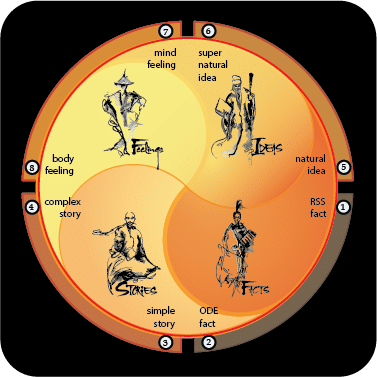What is the main driving force underlying children’s cognitive development according to Jean Piaget?
George, let me start by saying this; as usual, you’ve asked me an interesting question. And while my immediate motive for telling you this should be apparent, it’s likely, my underlying motive will not be. My underlying motive? Your question pleasantly surprised me. I’d never considered this question and the more I thought about it, the more I realized, I’m not even sure Piaget cared enough to ask this question.
What can we know, then, as to what he did care about? We know much of his drive to learn how children learn came from observing changes in his own daughter and in his nephew. From this, we know he eventually created a developmental meta-overview of how children learn. But their motives for learning? Like most great souls, Piaget was first and foremost an observer of life (the whats and hows). It seems that that he left the interpretations (the whys) for others to posit.
What about if we drill down into the kinds of things he did look for; the hows and whats of childhood learning. Here it’s easy to see is his focus was different from most modern observers of human nature. People today generally focus more on what’s missing or inadequate than on the beauty in personality. Whereas Piaget focused mainly on the best qualities in children; their inherent curiosity, their love of learning, their ability to constellate this learning (e.g integrate into schemas), and their ability to integrate new learning into these constellations (assimilation and accommodation).
Now consider how these same qualities had to be what drove Piaget himself as he sought to discover the meta-principles of childhood learning. He was curious. Curiosity derives from the ability to discover good questions. He loved learning. The Love of Learning derives from how good questions can enrich a life. He had an extraordinary ability to constellate what he observed. Constellating is the act of discovering how, in a good life, all things affect all things. And he had an extraordinary ability to revise and integrate new observations into what he’d previously discovered. The Ability to Integrate derives from the realization that the number of possible good questions is infinite, making it possible to love learning across one’s entire life.
Now contrast and compare what Piaget tells us about “how children learn” to the mind-numbing way most modern classrooms try to force-fit ideas and answers into children’s heads. Piaget says children learn actively, by asking questions, and by interacting with life. Whereas learning in most modern classrooms is more a passive pursuit. Here children learn to not ask questions and mainly try to memorize someone else’s answers.
Piaget himself said of the learning process, “I find myself opposed to the view of knowledge as a passive copy of reality. . . I believe that knowing an object means acting upon it, constructing systems of transformations that can be carried out on or with this object. Knowing reality means constructing systems of transformations that correspond, more or less adequately, to reality.”
Ultimately then, I believe Piaget never said, in the logical sense, why children want to learn. And to be blunt, I do not see why we need to know this. The what and the how tell us all we need know. The what and the how are the motives. Curiosity formed into personally meaningful questions. Allowing these questions to enrich our love of life. Constellating what we discover into a broad sense of how we connect to each other and to our world. And realizing that doing this across a whole life Is what makes life worth living.
Does it makes sense yet, George, why your question felt so good to me?
It reminded me, yet again, why I so love life.
Thanks again.
